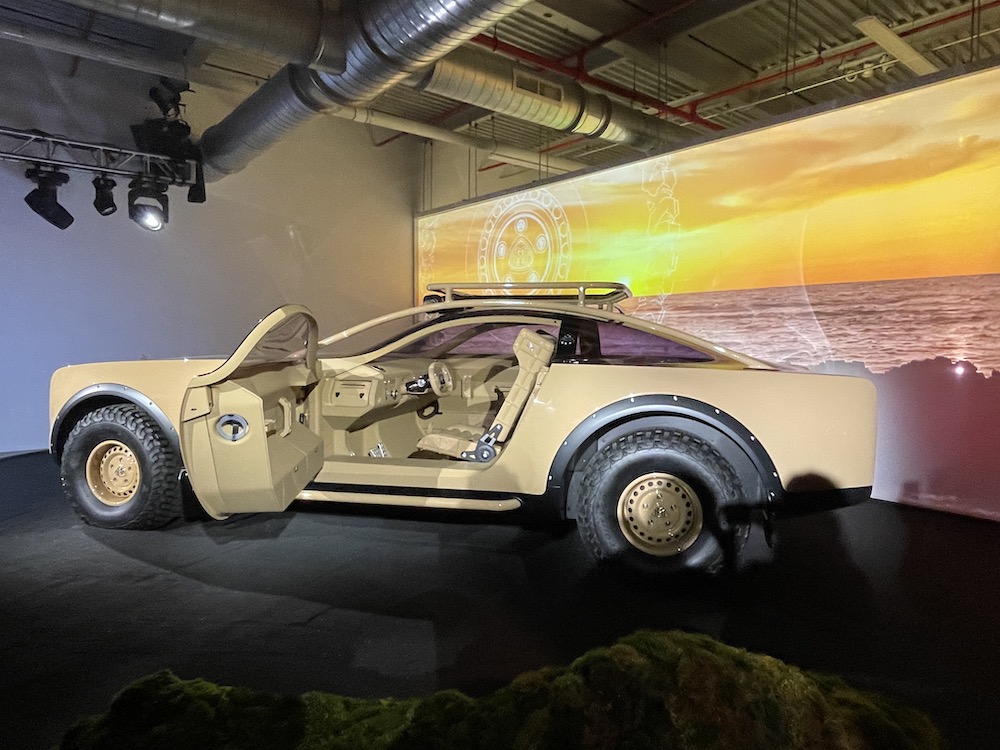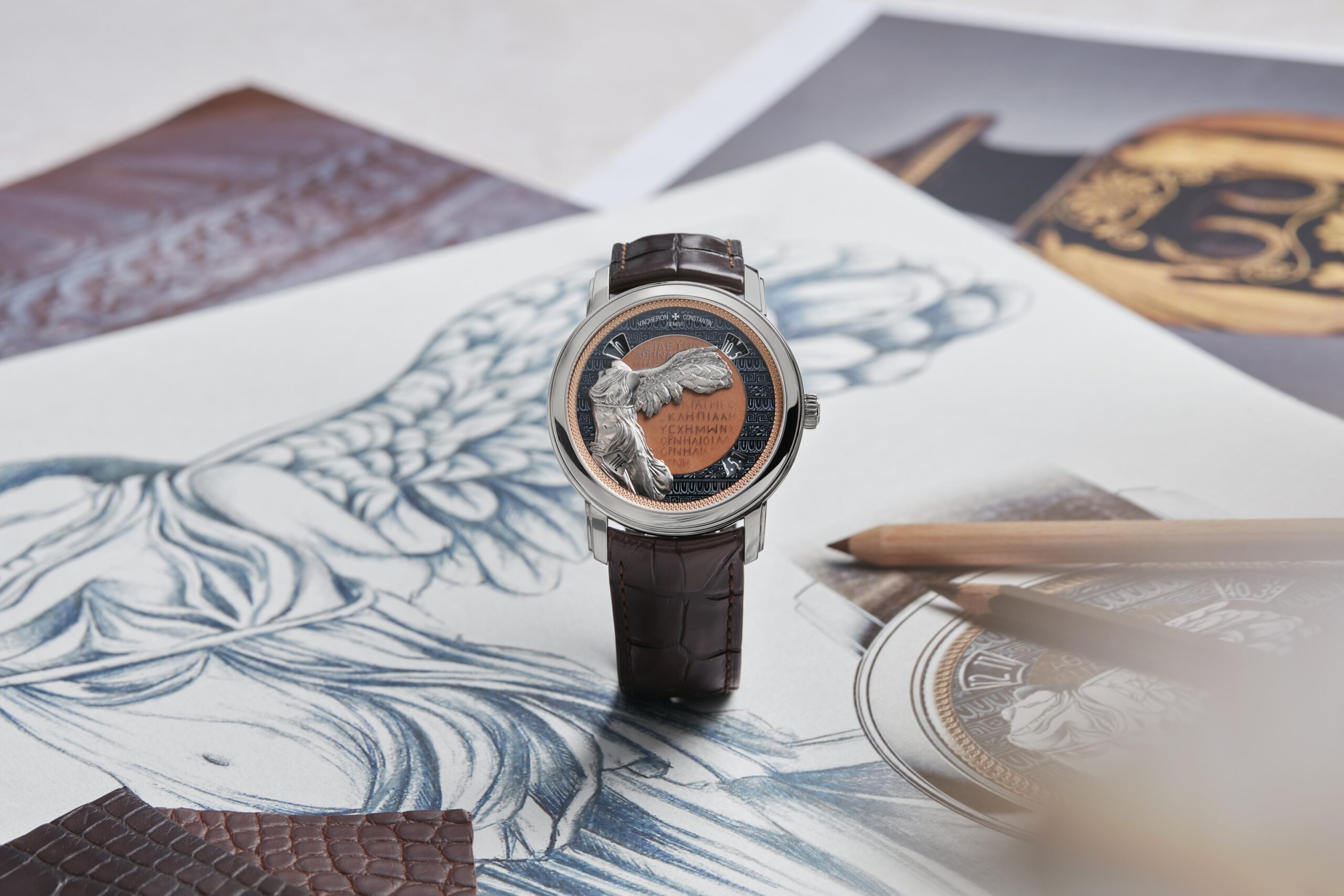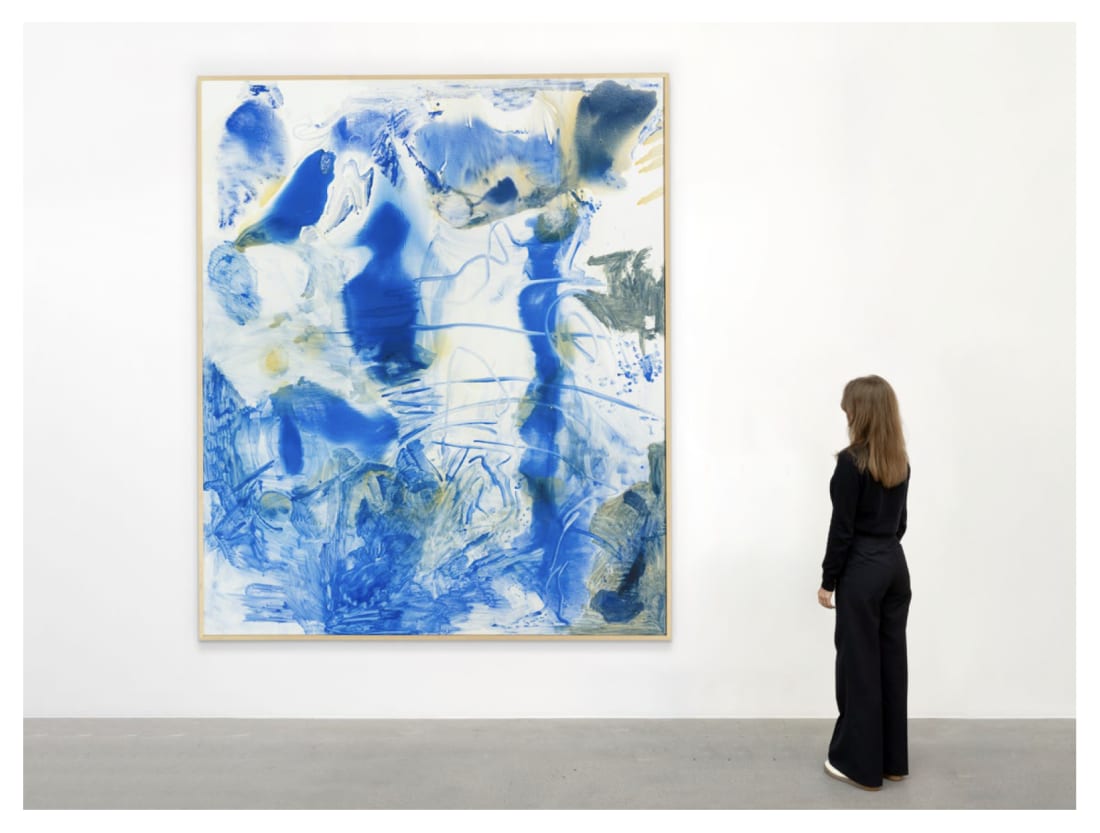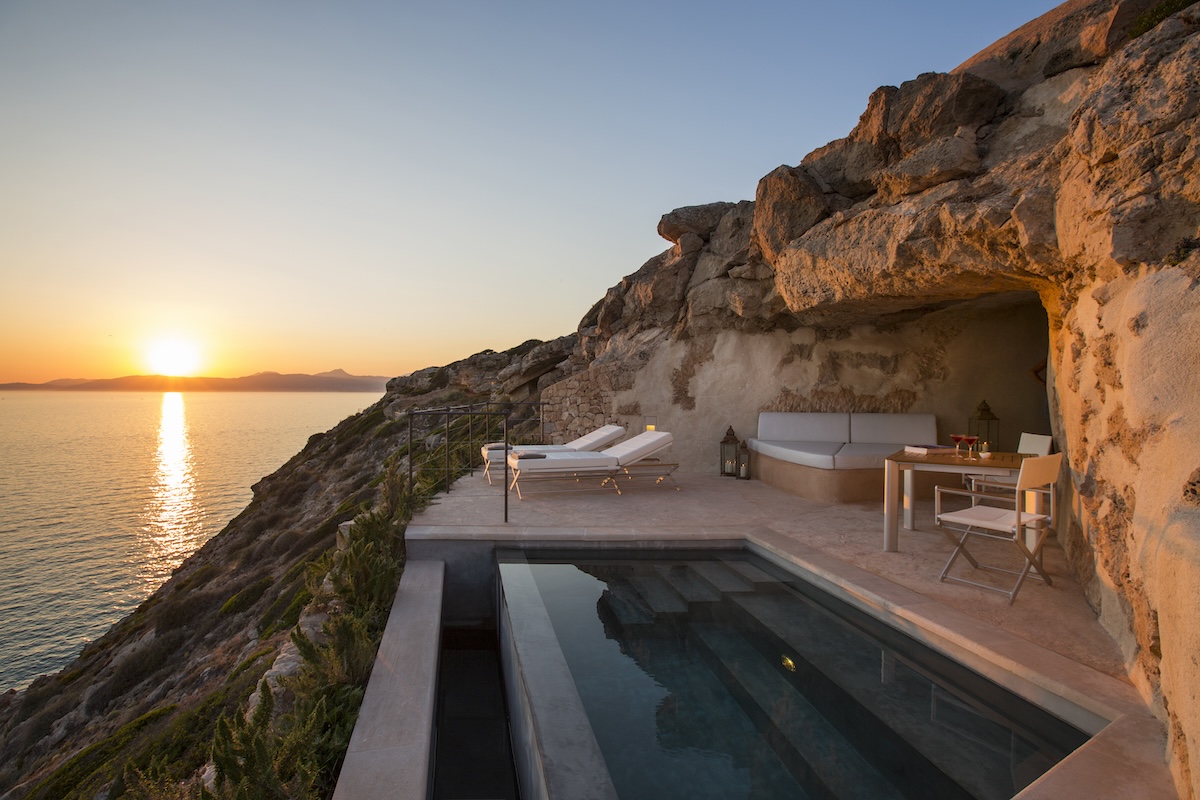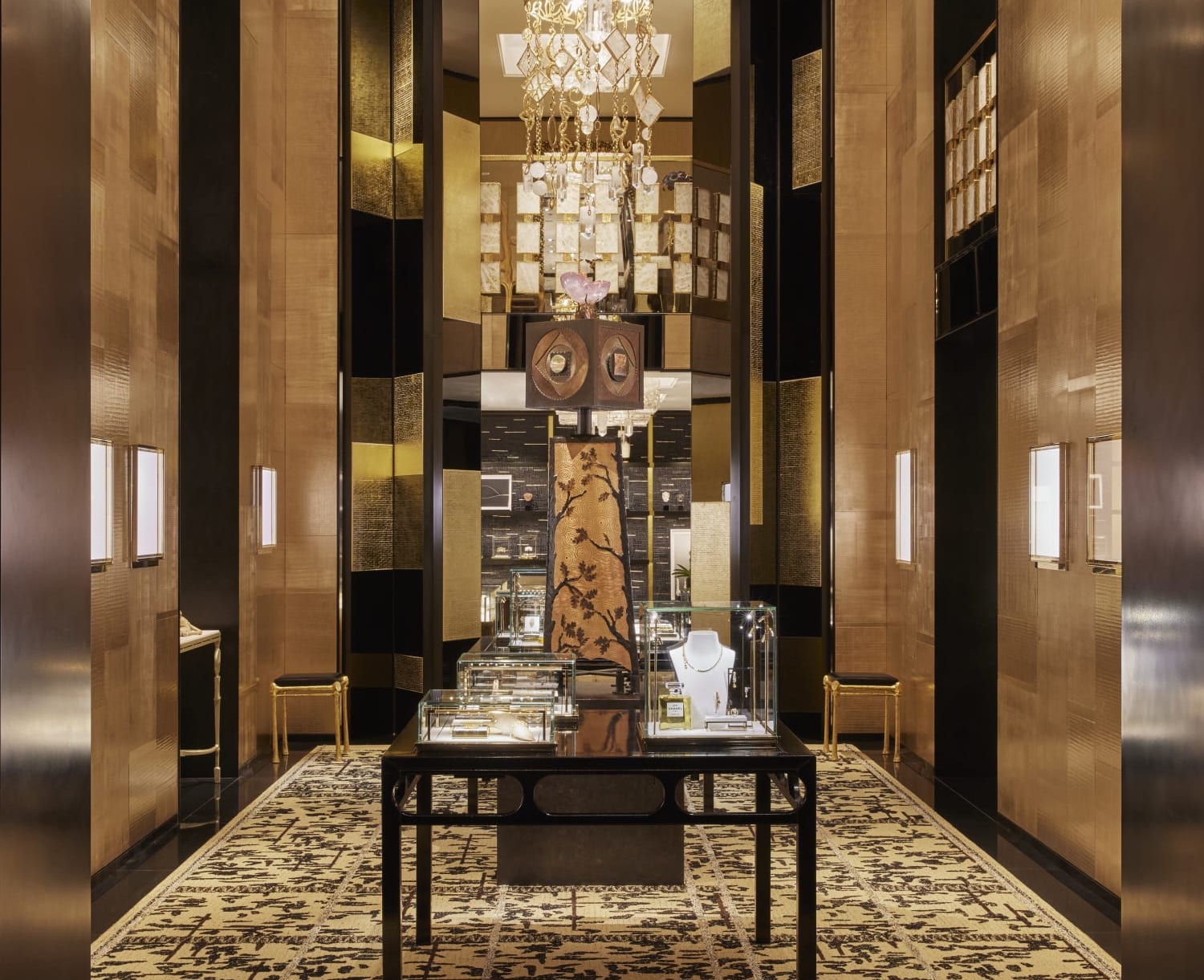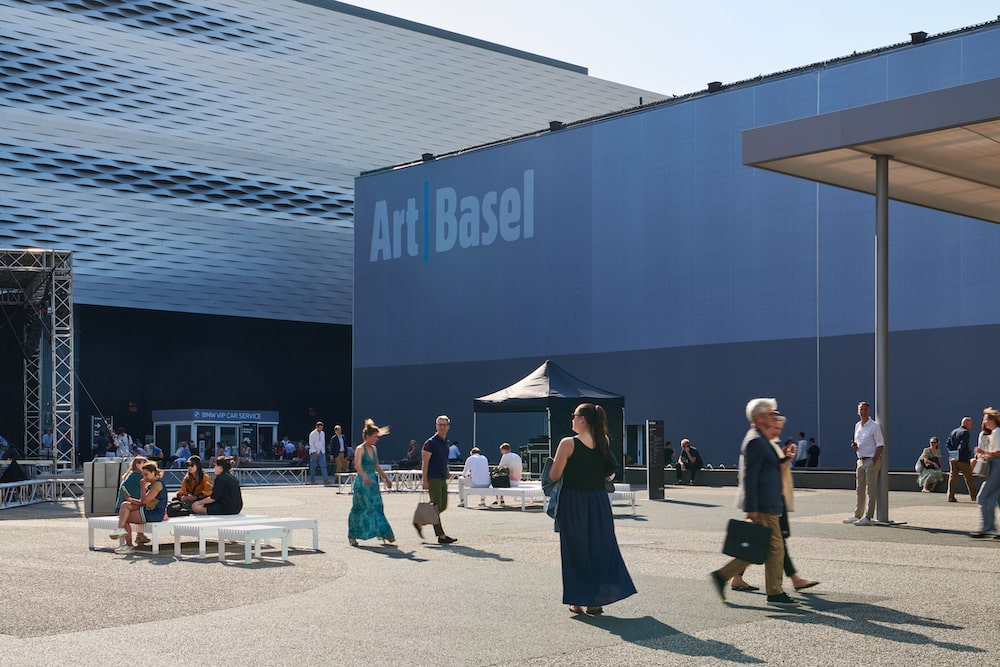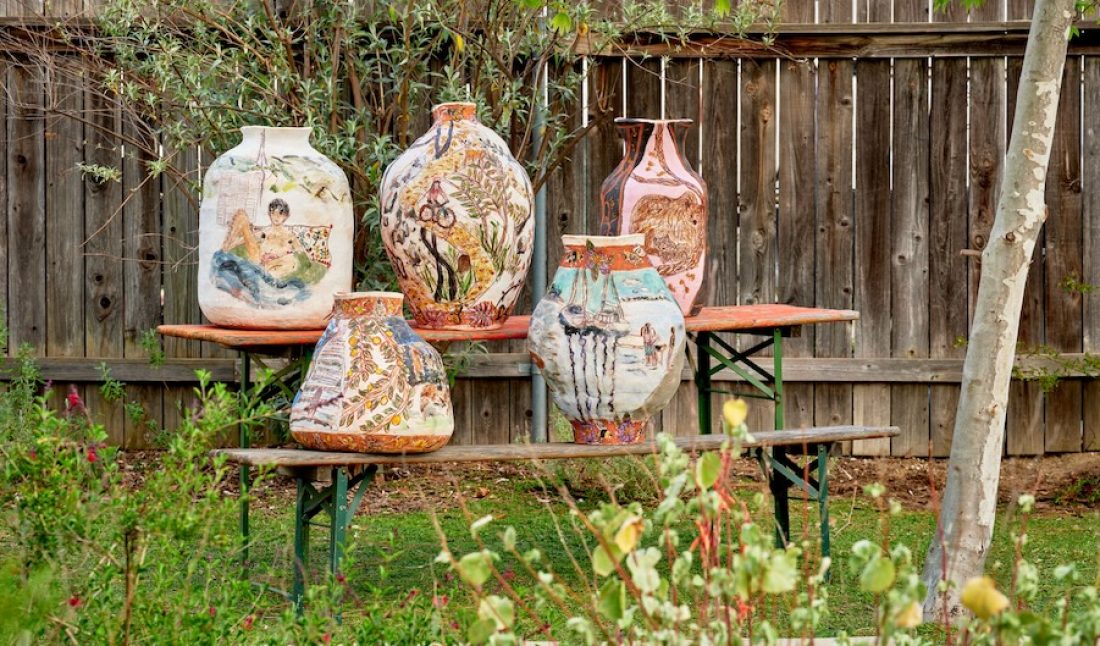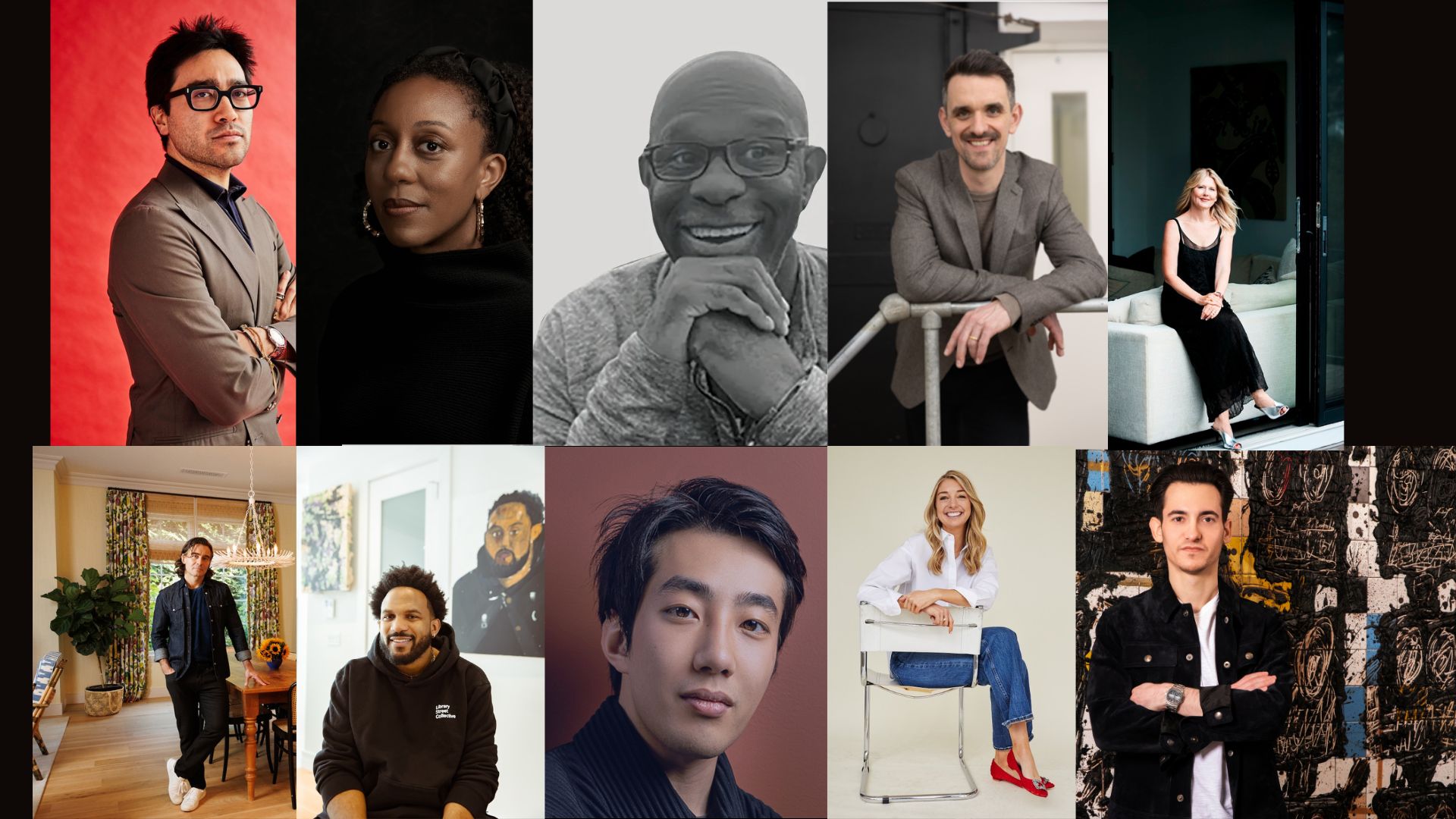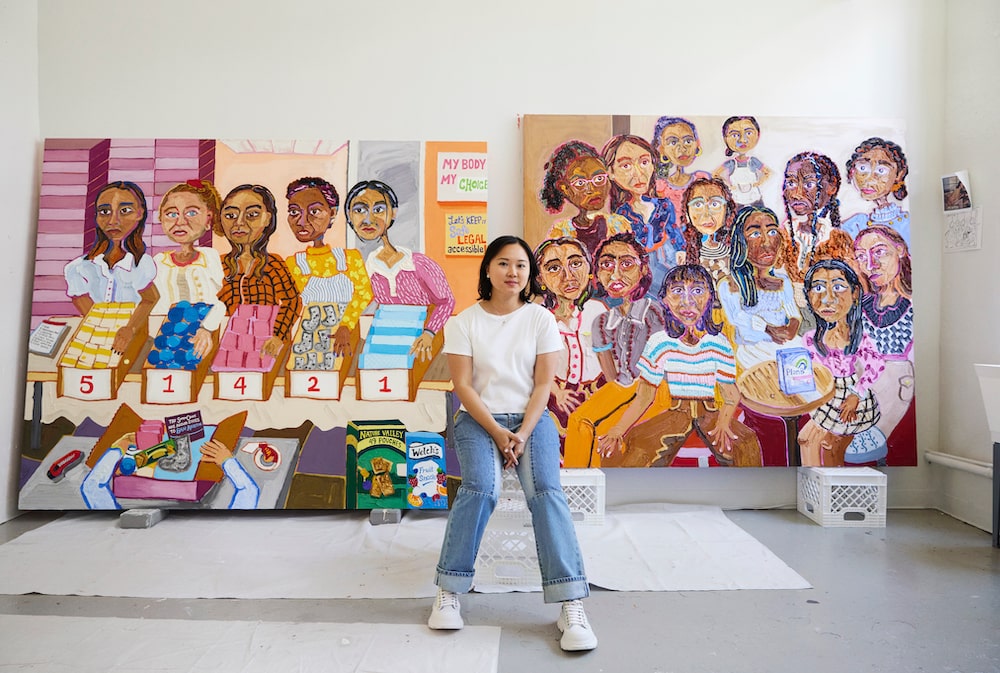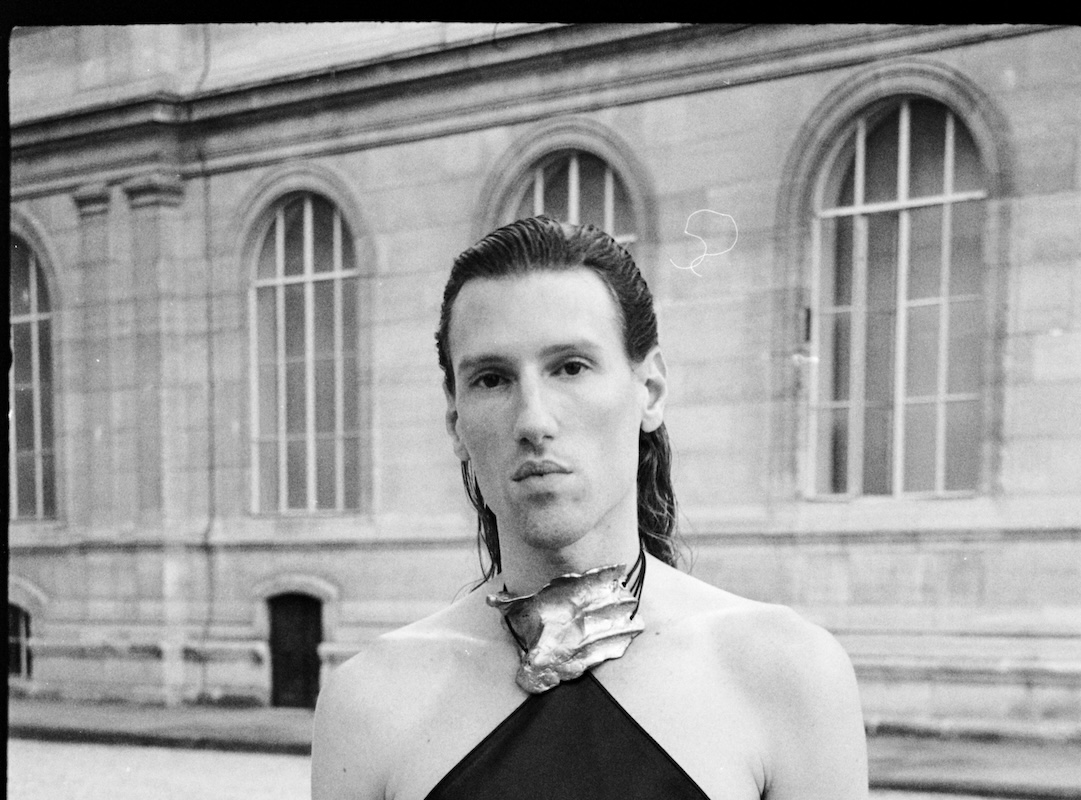Jennifer Rochlin embraces the unpredictability of clay and the imperfection of the handmade. Her exhibition of new work, “Paintings on Clay,” is on view through July 12 at Hauser & Wirth on 22nd Street in New York. Creating large pots by the technique of hand coiling, the artist then paints scenes from life or stories she wants to tell. Whether referencing nature, family, friends, memories, or artworks she loves, her paintings feel intimate yet universal. Moving around her bodily imperfect forms are vignettes of a railway, a bike trail, a woven rug, a sailboat, or a snowman. They’re full of color, life, humor, and community. She even invites the latter to make their own marks on some pieces—be it drawing on or biting into the clay. Rochlin spoke with Whitewall this spring about her exhibition at Hauser & Wirth, which also includes paintings of her pots in situ.
WHITEWALL: What was the starting point for “Paintings on Clay” at Hauser & Wirth?
JENNIFER ROCHLIN: Summer Snow was the first pot I made for the exhibition. It started with a scene from skiing in Mammoth in June with my kids. In California, we had an amazing year of rain the previous year, and the ski resort was able to stay open until August. So we took advantage of reduced-priced tickets and went up there with some friends. I’ve tried to get my kids skiing a few times and it hasn’t really worked well, but this time they were finally able to get the hang of it, and I was so excited because I grew up skiing and love it. They were skiing with their friends, and I’m on the lift and see them on the side of the hill making a snowman. My kids are obsessed with snow since they don’t get to be in it often.
I just thought it was such a great scene: In my mind, I’m picturing them off skiing, but instead they are just being kids, doing what they want, which was to stop skiing and make a snowman! It captured a lot of things for me—the amazing natural beauty and bounty of California, being active, and kids just doing what they want.
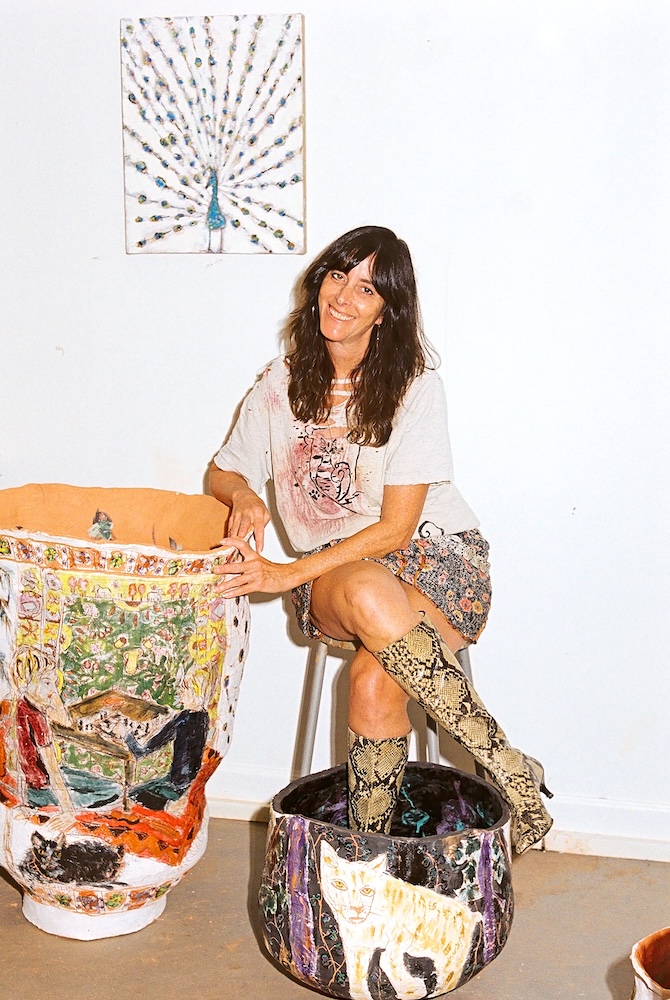 Portrait of Jennifer Rochlin, photo by Maya Fuhr.
Portrait of Jennifer Rochlin, photo by Maya Fuhr.
Creative Vessels In Dialogue with Each Other
WW: Where do you begin with a vessel?
JR: I begin with a drawing of the shape I want for the pot. It is usually based on what other shapes I already have going. I like creating a variety of different sizes and shapes, and for those all to be in dialogue with each other.
WW: How does your hand-coiling process influence the scale and shape of the final vessel?
JR: Sometimes the clay decides for me. I have a drawing, and it rarely goes the way I want! Whether I’m impatient or too ambitious; sometimes going too quickly makes the form get too narrow, sometimes the clay decides to droop or go out on its own. I usually lean into the unpredictability of the medium and the imperfection of my own hand, and my assistant is helping to build them as well. It’s a lot about patience and timing.
WW: Do you have an idea of what you want to paint before the shape is formed?
JR: The idea usually comes from seeing the pot formed or what is going on in my life. I might respond to the shape of the vessel or have a particular story I want to tell. Often, I won’t know in advance what I’m going to draw on the pot, so I will start with a border, and that is a way into the work for me.
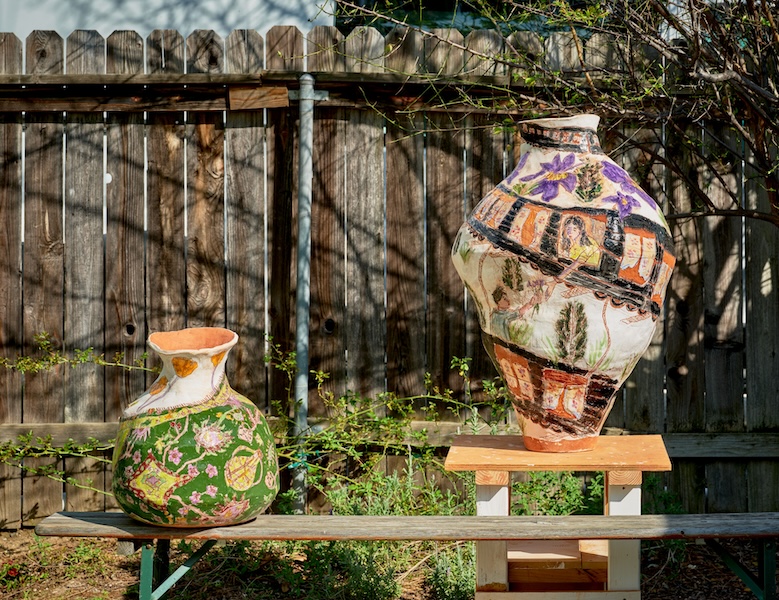 Jennifer Rochlin Studio, Altadena, CA, © Jennifer Rochlin, courtesy the artist and Hauser & Wirth, photo by Keith Lubow.
Jennifer Rochlin Studio, Altadena, CA, © Jennifer Rochlin, courtesy the artist and Hauser & Wirth, photo by Keith Lubow.
“I usually lean into the unpredictability of the medium and the imperfection of my own hand,” — Jennifer Rochlin
WW: How do you see these works in conversation with the body—both yours and the viewers?
JR: The shape and scale of these works do feel bodily, in large part because a lot of working with clay is determined by what my own body and my assistant’s body can handle, how much of the clay we can move around.
And then, viewing the works from multiple sides—to take in not just their shifting forms but the narrative imagery on their surfaces—demands that the viewer walk around each piece, thus engaging the viewer’s body. The narrative doesn’t have a beginning or end, so you can drop in whenever and move in close and back up.
I also think the pots are irregular and misshapen like bodies, each one so individual. The standard names of the parts of a vessel are corporeal: lip, body, foot. So there is a built-in relationship to the body with all pots. I like responding to that but push it farther so each one is unique and has its own personality.
WW: A few years ago, you started a mark-making technique of biting, both by you and inviting others. Can you tell us about this way of mark-making, how you highlight it in the pieces, and in which works we’ll see examples?
JR: I love having guest biters! It started years ago in a residency in Versailles where I wanted to depict bites on a figure, and I wasn’t sure how I was going to do that. I decided to just bite the clay and it was just such a satisfying experience that I wanted others to do it as well.
What I noticed from having other people bite the clay is that everyone’s bites are different, so their marks are different. I love responding to them on a piece and turning them into either butterflies or just abstract marks.
You never know what someone will do. One might take one small, timid bite, another might bite a whole side of a pot. I think I like the loss of control I experience when I invite someone to participate, then sometimes it becomes a challenge to incorporate what they’ve done into the piece. It also becomes a record of who came by the studio and when.
What is interesting in this new body of work in the exhibition is that I purposely didn’t have many people by the studio while developing it because I didn’t want any outside input on these vessels. So the bites here are limited to one of the first pieces I made, Two Weeks in July, and one of the last pieces I made, Green Tapestry with Poppies and Bites.
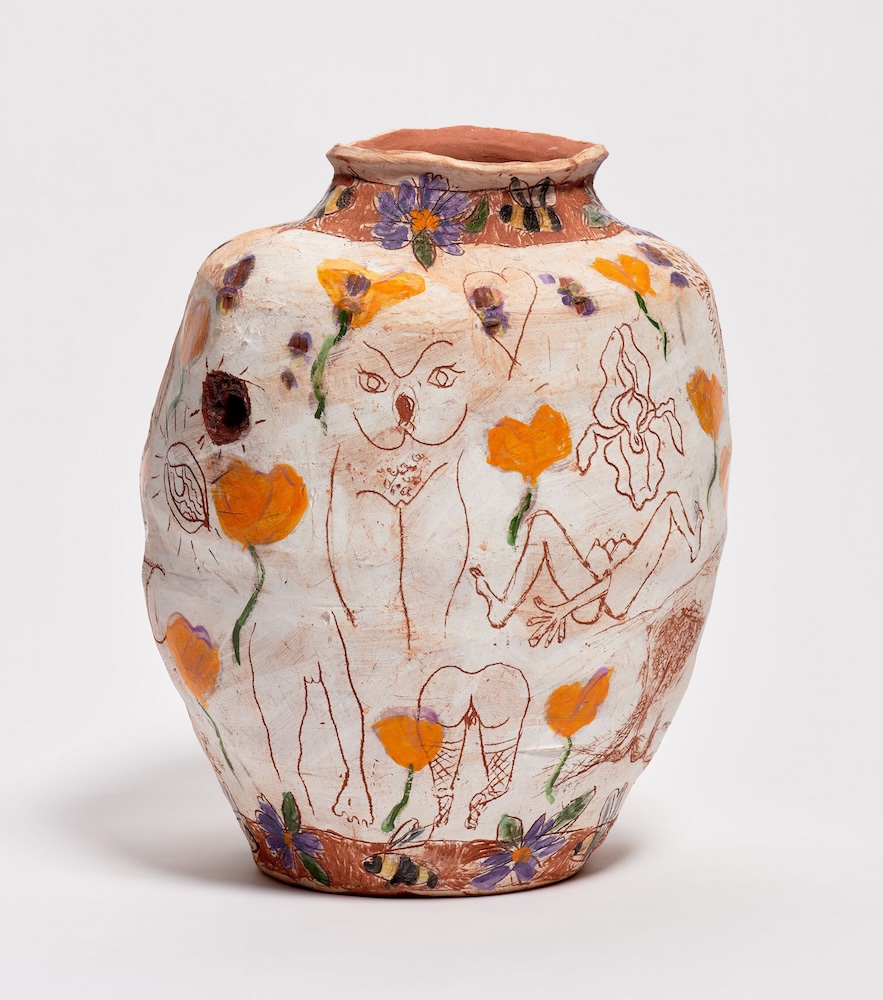 Jennifer Rochlin, “Honey Pot,” 2024, Ceramic with glaze, 61 x 43.2 x 43.2 cm / 24 x 17 x 17 in.; © Jennifer Rochlin, courtesy the artist and Hauser & Wirth,
photo by Keith Lubow.
Jennifer Rochlin, “Honey Pot,” 2024, Ceramic with glaze, 61 x 43.2 x 43.2 cm / 24 x 17 x 17 in.; © Jennifer Rochlin, courtesy the artist and Hauser & Wirth,
photo by Keith Lubow.
“I decided to just bite the clay and it was just such a satisfying experience that I wanted others to do it as well,” — Jennifer Rochlin
WW: Can you tell us about the inspiration behind the work Honey Pot?
JR: The Honey Pot is a companion piece to the Cock Pot I made last year for an exhibition focused on Brigid Berlin, curated by Alison M. Gingeras at Vito Schnabel Gallery. Brigid had made a “Cock Book,” a sketchbook she took around to bars and asked artists she ran into to draw penises in it. So I decided to continue that tradition of hers but with my contemporaries and have them draw penises on a pot. That was last year.
My artist friend Jake Sheiner said, “Well now you need to do a honey pot, too.” So I invited my female artist friends to draw vaginas on a very large new vessel, and I drew bees and flowers around the rim to go with the honey pot theme. I took the pot in the trunk of my car to friends’ studios, to a birthday party at a restaurant, and to my friend’s opening where I knew I would encounter a lot of other female artist friends who could draw on the piece. And some artists came over to my studio and drew on it there.
WW: Do you see your practice as collaborative?
JR: I think for sure there are aspects of my practice that are collaborative, like having people bite the work and having friends draw on pieces. Also, since people in my life often end up depicted on the work, I guess you could say that is a collaborative aspect as well. And then also, the physical engagement of the viewer, the way the pot invites you to walk around it, to move in response to it—that is collaborative.
WW: Can you tell us about your studio space? What is a typical day like for you there?
JR: It’s the garage at my house in Altadena, a beautiful location up against the foothills. When I’m working on a show, I get in the studio early at five a.m. before my kids are up, and I get two and half hours of work in before I need to wake them up and get them breakfast. I love the early morning hours when it is still dark out and so quiet. Then I get them off to school, and I usually either go for a hike or a bike ride with friends in the mountains right next to my house. Then back in the studio for a few hours. I’m really a morning person and am done in the studio by three p.m.
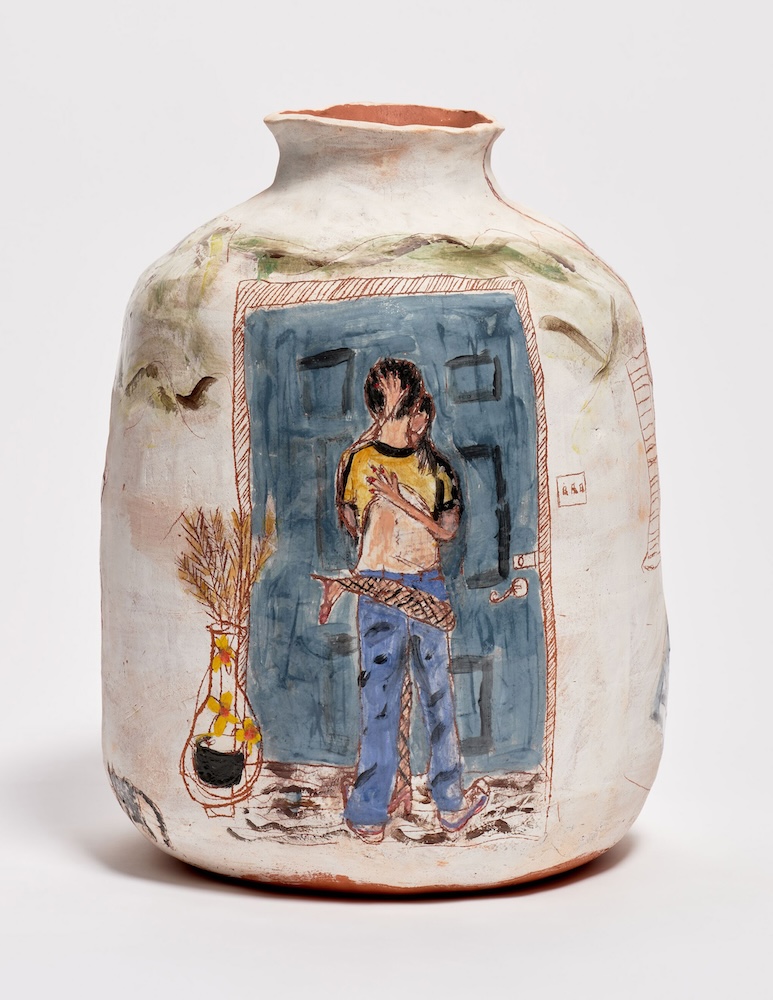 Jennifer Rochlin, “Late Afternoons,” 2023,
Ceramic with glaze
61 x 45.7 x 45.7 cm / 24 x 18 x 18 in.; © Jennifer Rochlin, courtesy the artist and Hauser & Wirth, photo by Keith Lubow.
Jennifer Rochlin, “Late Afternoons,” 2023,
Ceramic with glaze
61 x 45.7 x 45.7 cm / 24 x 18 x 18 in.; © Jennifer Rochlin, courtesy the artist and Hauser & Wirth, photo by Keith Lubow.
